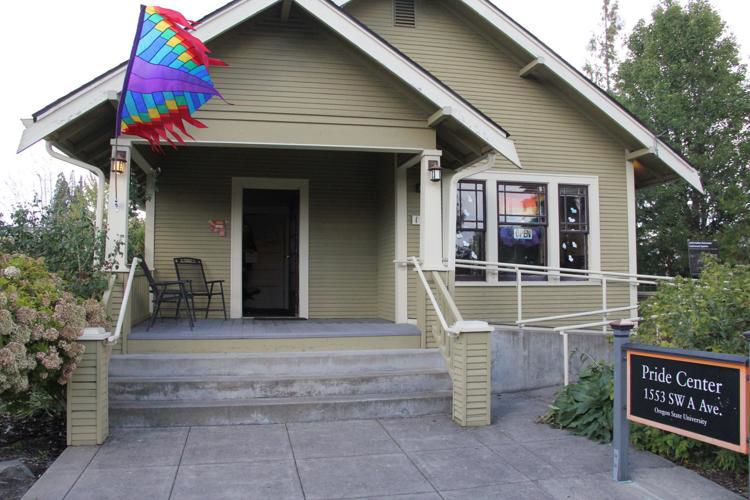OSU celebrates Queer History Month
October 22, 2018
Queer History Month is nationally recognized in the month of October, and the OSU community will mark this month with a series of events devoted to growth and celebration.
“Queer history month is a time to reflect on the history and current experiences of LGBTQIA+ people, with a focus on the most marginalized members of our community,” Cindy Konrad, assistant director of the Pride Center and advisor to SOL: LGBTQ+ Multicultural Support Network, said in an email. “It’s a time for doing the hard work of examining where our community has replicated the systems of dominance we see in mainstream culture and how we can move forward into a more just future. It also is a time for celebrating the beauty, power, and brilliance of LGBTQIA+ people.”
On Oct. 4 the month’s festivities kicked off with a barbecue at the Pride Center. According to Konrad, approximately 200 people attended the barbecue. A number of events have taken place since then, including a discussion about the unsolved assassination of Brazilian, Black and queer politician Marielle Franco and the Beards and Stilettos Dance Party, celebrating queer, transgender and intersex people of color.
Coming up this week is the Living Library event, SOL’s Kickback and Relax, Glitter in the Archives and finally the OSU Fall Drag Show.
Glitter in the Archives, which will take place in the library’s Special Collections and Archive Research Center reading room on Friday, offers a chance for students to engage with materials from the Oregon State Queer Archives and a whole lot of glitter glue.
According to Natalia Fernandez, associate professor, curator and archivist of the Oregon Multicultural Archives and OSQA, this will be SCARC’s third year hosting Glitter in the Archives. This year, the event is a collaboration between SCARC, the Pride Center and the Craft Center.
“The mission of the OSU Queer Archives is to preserve and share the stories, histories and experiences of LGBTQ+ people within the OSU and Corvallis communities,” Fernandez said in an email. “As an archive, OSQA collects materials pertaining to the past, but in addition, our goal is to gather the current experiences of LGBTQ+ communities.”
The OSQA features materials such as oral histories including recordings of interviews and events, photographs and scrapbooks and documents. At Glitter in the Archives, students are welcome to donate their work to the OSQA. Students are welcome to visit SCARC and see the OSQA, in addition to other archived materials.
According to Reagan Le, assistant director for Diversity and Cultural Engagement, a critical component of events like those involved with queer history month is allowing students to find communities in which
they feel at home.
“All the CRCs are about developing community and a sense of belonging while addressing inequities and various forms of social injustice,” Le said in an email.
Konrad expressed similar values for the work done at the Pride Center year round.
“I see the Pride Center as a place where people can be their authentic selves, where all aspects of their identities can be respected, and where they can learn about themselves and each other,” Konrad said in an email. “This is a lofty goal, and every day we work toward it.”
For more information, visit the Pride Center or their website.

















































































![Newspaper clipping from February 25, 1970 in the Daily Barometer showing an article written by Bob Allen, past Barometer Editor. This article was written to spotlight both the student body’s lack of participation with student government at the time in conjunction with their class representatives response. [It’s important to note ASOSU was not structured identically to today’s standards, likely having a president on behalf of each class work together as one entity as opposed to one president representing all classes.]](https://dailybaro.orangemedianetwork.com/wp-content/uploads/2025/03/Screenshot-2025-03-12-1.00.42-PM-e1741811160853.png)























